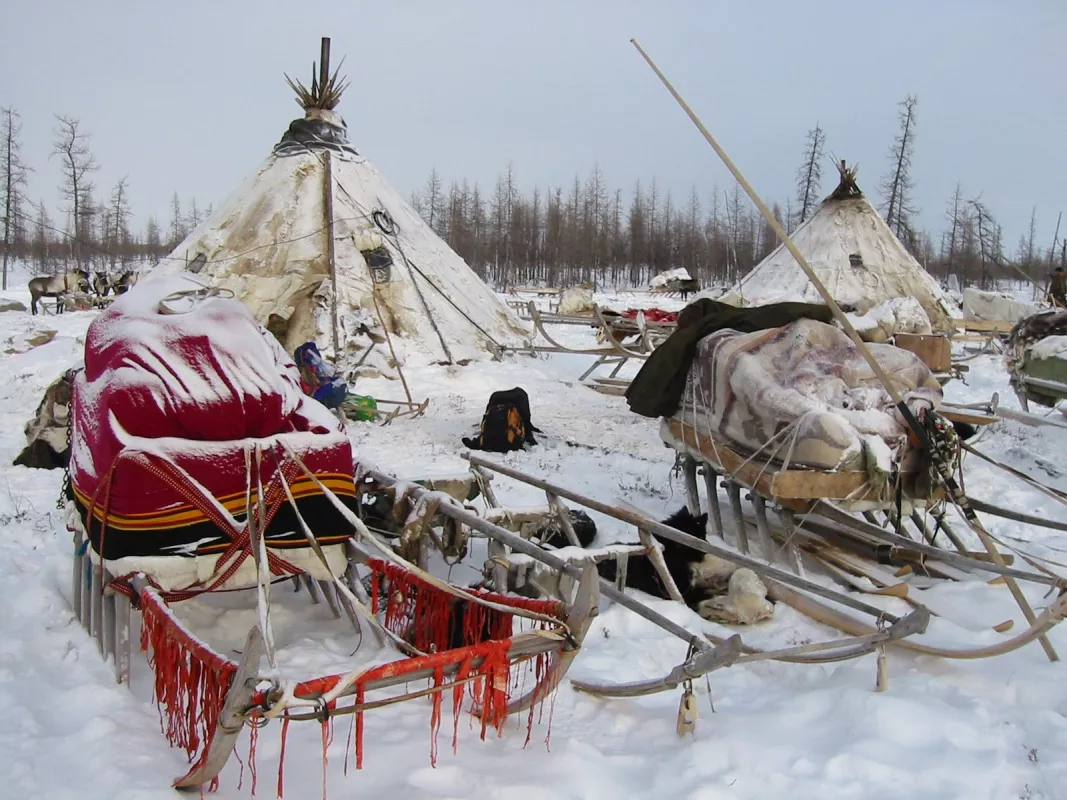As climate change warms the Arctic, new challenges continue to emerge for communities and ecosystems in the region. One such challenge is the increase of rain on snow events. When rain falls on snow cover in the Arctic then refreezes, it leaves a hard, icy crust. This icy crust prevents reindeer, caribou, muskoxen, and other animals from foraging for the food underneath. In some extreme cases, these rain on snow events have caused the mass starvation and death of tens of thousands of animals at a time. This is problematic not just for the animals and ecosystems, but also for the communities that depend on them for their livelihoods, such as the Sami people of Sweden, Norway, Finland, and Russia. Reindeer herding has been a way of life for the Sami for generations. The reindeer provide food, clothing and, historically, transportation. Trouble for reindeer means trouble for Sami.
Historically, the majority of winter precipitation in the Arctic has been snow. However, as the Arctic warms, scientists are observing more rainfall in winter on top of the snowpack, and modeling suggests that precipitation in general will increase as the Arctic warms. Scientific evidence shows that these rain on snow events are becoming more frequent as a result of climate change, though data on this topic are limited. The Arctic Rain On Snow Study (AROSS) project, which began in 2020 and is led by National Snow and Ice Data Center (NSIDC) director and Arctic scientist Mark Serreze, aims to quantify these changes in rain on snow events, assess their impacts on ecosystems and human societies, and determine how their frequency and intensity will change in coming decades.
The better we understand these rain on snow events and how they are changing, the better prepared we will be to mitigate the challenges that come along with them.
The interconnectedness of physical and social science
How have the frequency of these rain on snow events changed, have they become more severe, and how are communities and ecosystems being affected by these changes? These are questions that the Arctic Rain On Snow Study aims to answer. The cross-disciplinary project focuses on both the physical and social science of the problem, and includes Arctic scientists from a wide variety of disciplines. The project team collaborates with local observers from the Local Environment Observer (LEO) Network and the communities directly impacted by rain on snow events.
The AROSS project science team is working to:
- Consolidate our knowledge about rain on snow events and make this information easily available to those interested;
- Learn more about the processes that lead to rain on snow events such as how these weather events are forming and how their frequency and intensity is changing;
- Better understand how the physical aspects of rain on snow events tie together with the impacts of these events, such as how they affect communities and ecosystems;
- Monitor where and when these rain on snow events have occurred, and forecast when and where they are likely to occur in the future.
Using data to help Arctic communities prepare for change
AROSS consists of multiple studies and projects that, when tied together, create a holistic understanding of Arctic rain on snow events and their impacts. The major product being built as part of the project is a web-based “data and knowledge hub.” This database will consolidate these studies and projects, and our knowledge of the physical and social science aspects of these rain on snow events into one place. The hub will contain multiple types of data, including satellite passive microwave data, data from atmospheric reanalysis, station data that have been recorded at meteorological weather stations, local observations, and qualitative data from interviews and discussions from those who are affected by rain on snow events. Local observers can tell us when and where these events took place and how they were impacted. Once these different types of data are put into the database, they will help to identify where and when these rain on snow events have occurred and will be searchable for particular types of events. This information will be freely available to all.
The scientists involved in AROSS hope that this project will help mitigate the challenges that rain on snow events bring to communities. If we can predict when events are coming and get a better handle on how they are changing, we can better prepare, both now and in the future. For instance, could reindeer herders change some of their practices to mitigate some of the effects of increased rain on snow events?
Collaborating to understand Arctic change
AROSS is a collaboration between NSIDC, the Cooperative Institute for Research in Environmental Sciences, the University of Colorado Boulder, the University of Winnipeg, the Alaska Pacific University, and the University of Lapland. The project also relies on observations and input from local Arctic communities and the LEO Network. Funding is provided by the National Science Foundation’s Navigating the New Arctic program, which funds interdisciplinary research that informs our understanding of Arctic change and its local and global effects. While NSF funding of the project only lasts for five years, those involved anticipate AROSS being a “living project” that will extend far beyond this initial funding.
